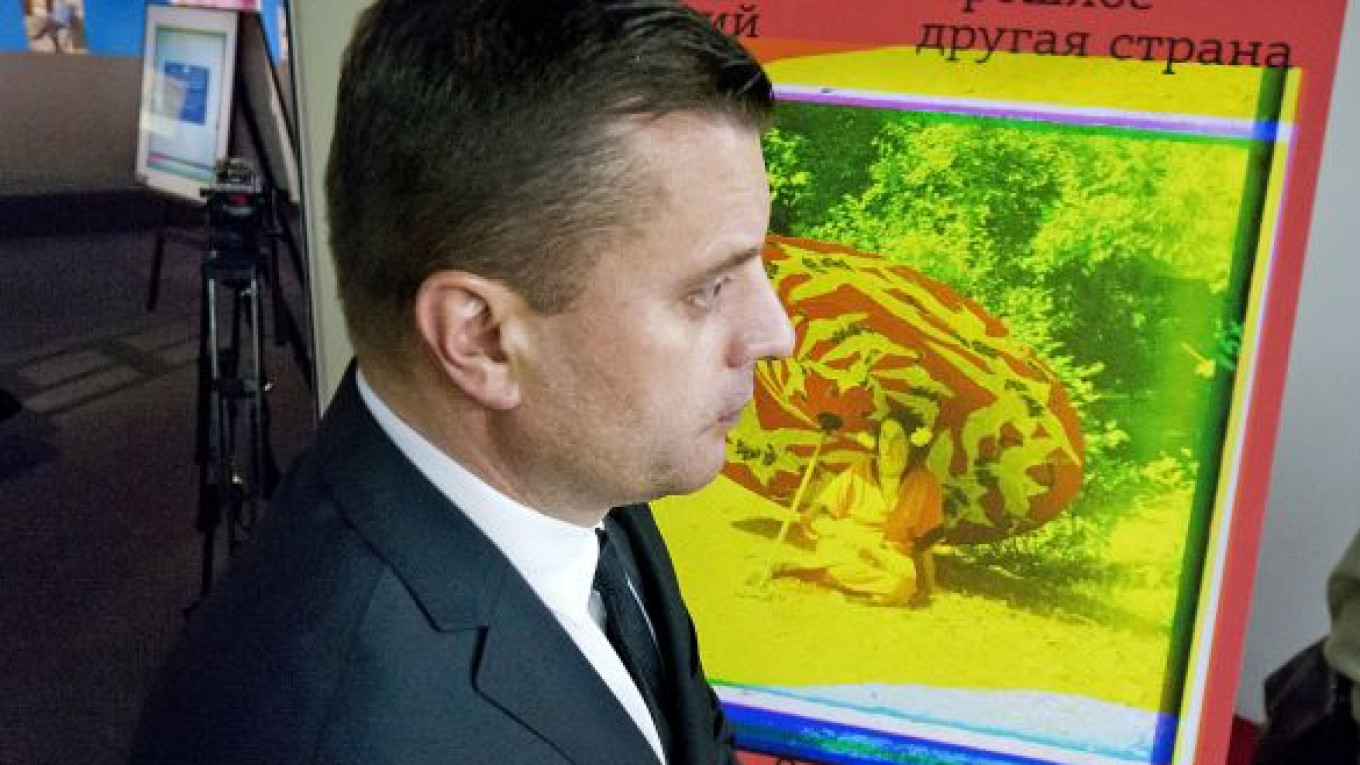Sergei Prokudin-Gorsky, a pioneer of color photography, is revered as one of the only sources of images from early 20th-century Russia, yet his images are few and rarely displayed. Now, a new exhibition is being held at the Museum of Moscow, a traditionally stodgy historical museum that has remade itself this season with a series of interesting art exhibits.
In addition to the Prokudin-Gorsky exhibit, the museum is also displaying "Nothing of the sort," an exhibit within the framework of the Fifth Moscow Biennale of Contemporary Art, which contrasts the artwork of different generations. The museum is also home to the exhibit "Moscow Mythology," a small collection of sculptures that work very well in the courtyard where they are displayed.
"The artists of this exhibition project are united by a community of language that as well as being plastic is conceptual," writes Vladimir Logutov, curator of "Nothing of the sort," in an introduction to the exhibition. This "commonality of methodology" that Logutov speaks of links artists of different generations, and this bond seems to be at the center not only of "Nothing of the sort" but rather is reflected in all of the exhibits at the Museum of Moscow, which neatly display past and present side by side.
Sergei Prokudin-Gorsky's photographs are fascinating even without context: red-cheeked peasant girls picking strawberries, swarthy Bukharan courtiers and dour, bearded muzhiks all come to life in Prokudin-Gorsky's colored images. Characters that we could otherwise only experience in the pages of Tolstoy, who is pictured in the exhibit, or Lermontov, are put before our eyes and appear no less strange and wonderful in photographs than they do in text.
Even the landscapes of Russia from a century ago are fascinating to view — without microrayons and Soviet-era apartment blocks, Russian cities are almost unrecognizable, though the colorful wooden houses of the Russian villages actually do not look too different from what one might find a couple of hours outside of town.
While the photographs would be interesting even on their own, the Museum of Moscow has taken the exhibit to another level by including a separate set of photographs. In one section of the exhibit, Prokudin-Gorsky's photographs are displayed side by side with nearly identical photos taken recently by journalist Leonid Parfyonov in the exact same locations as Prokudin-Gorsky's shots.
With this method of display, the contrast between the Russias of today and a century ago becomes evident: churches once resplendent with color and gilt and have been destroyed and abandoned, bridges and railroads have crisscrossed the landscape, and tall buildings have replaced dense, low cityscapes.
While only a small selection of Parfyonov's photos are on display, they give much more depth to Prokudin-Gorsky's shots. Parfyonov has numerous shots mimicking Prokudin-Gorsky's work as part of creating a documentary film about the famous photographer called "Color of the Nation," which will premiere soon.
This juxtaposition of old and new was continued in the exhibit "Nothing of the sort" which displayed the works of young and old Russian artists. While the works in the exhibit are not united by a particular theme, a certain demarcation is evident between the art of younger and older generations.
While older artists have contributed works like a set of bricks carved to look like the complete works of Vladimir Lenin, younger artists have focused on more postmodern works, like the sculpture "There will be no more opening" (Otkrity bolshe ne budet), which depicts the title phrase painted on a red banner and surrounded by wooden cutouts of firearms.
Other pieces were less message-based, like a series of photographs showing items on a grocery store conveyor belt and the receipts for their purchase, or Sveta Shutayeva's series, "Catalog," which consisted of catalogs for fine art exhibitions and auctions, with all the pictures cut out.
While the pieces by the younger generation of artists are generally intriguing and provide an interesting counterpoint for their older peers, a few seemed genuinely derivative and perhaps consciously imitated other artists, like the sculpture "Barrier," a traffic barrier made of fluorescent lights that seemed somewhat too similar to Dan Flavin's extensive body of work with fluorescent tubes.
The final new exhibit at the Museum of Moscow, "Moscow Mythologies," is small and unimpressive compared to the other two temporary exhibits. A small number of sculptures have been placed in the museum's cramped courtyard, and perhaps the most interesting thing about the display is the extensive construction work going on around the statues: Endless construction is certainly one of the myths of modern Moscow, and this exhibit capitalizes on the changing surroundings.
All three exhibits are on display at the Museum of Moscow at 2 Zubovsky Bulvar (Entrance from Ostozhenka), Metro Park Kultury. For more information on the duration of the exhibitions, see mosmuseum.ru.
Contact the author at [email protected]
A Message from The Moscow Times:
Dear readers,
We are facing unprecedented challenges. Russia's Prosecutor General's Office has designated The Moscow Times as an "undesirable" organization, criminalizing our work and putting our staff at risk of prosecution. This follows our earlier unjust labeling as a "foreign agent."
These actions are direct attempts to silence independent journalism in Russia. The authorities claim our work "discredits the decisions of the Russian leadership." We see things differently: we strive to provide accurate, unbiased reporting on Russia.
We, the journalists of The Moscow Times, refuse to be silenced. But to continue our work, we need your help.
Your support, no matter how small, makes a world of difference. If you can, please support us monthly starting from just $2. It's quick to set up, and every contribution makes a significant impact.
By supporting The Moscow Times, you're defending open, independent journalism in the face of repression. Thank you for standing with us.
Remind me later.






